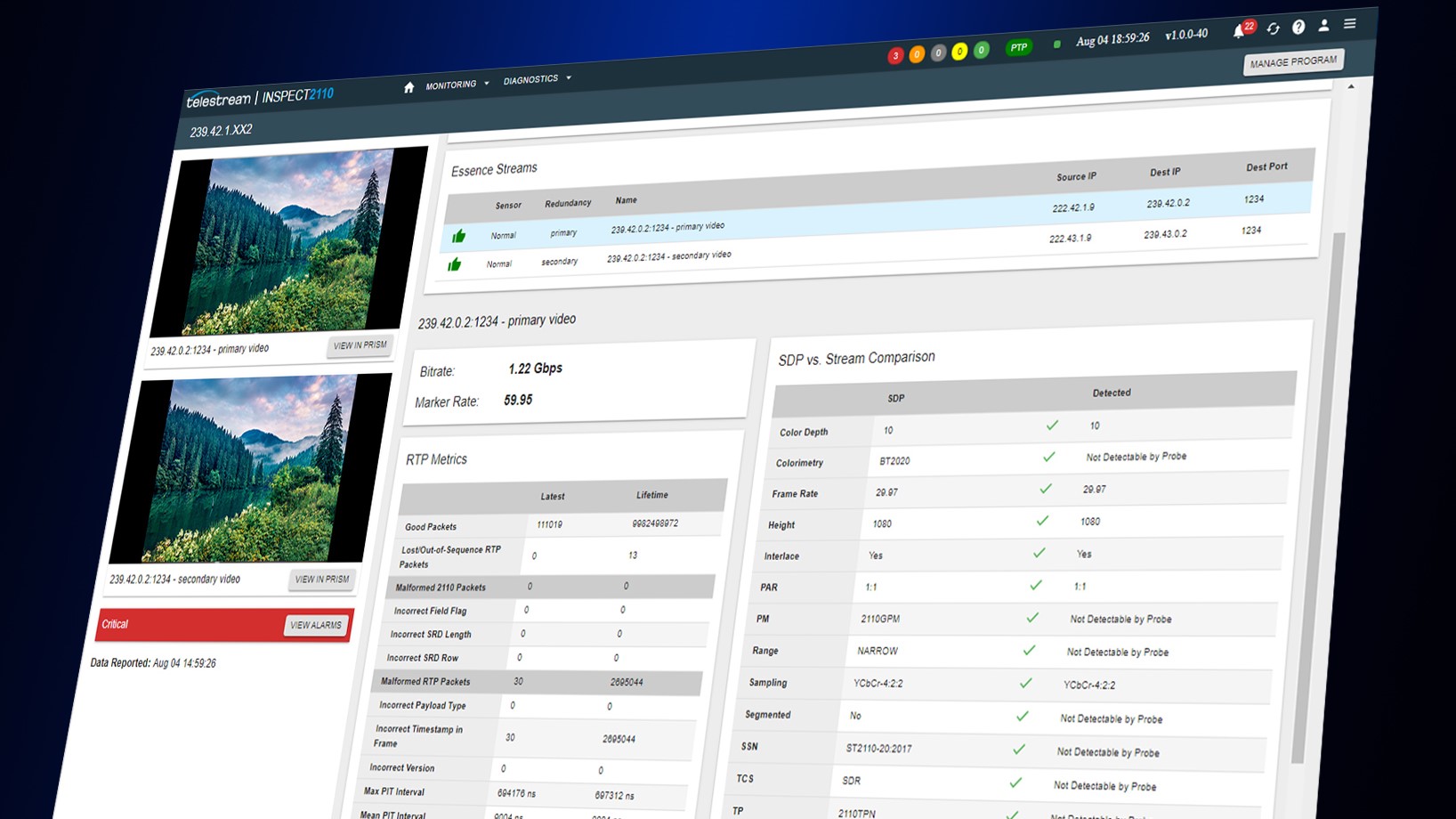Remote, OTT Driving Test & Measurement Trends
Demand for remote was strong even before the pandemic

OTTAWA—Even before COVID-19 compelled our industry to work from home, the companies who make TV test and measurement equipment were seeing an increased demand for remote access testing. The products they have brought to market are responding to this trend, plus the need to support ATSC 3.0 broadcast/transmission chains and OTT video streaming.
SPEED OF TRANSITION
COVID-19 not only accelerated the trend from hands-on to remote testing and measurement that was already underway, it increased the speed of this transition considerably.
“Engineers stuck at home have been calling us up asking, ‘can I get some remotely accessible test and measurement equipment that is either cloud-based or works in a virtualized environment,” said Ralph Bachofen, Triveni Digital’s vice president of sales and marketing for Triveni Digital in Princeton, NJ. “They didn’t have access to their at-work me- ters and spectrum analyzers anymore, but they had some kinds of issues that they had to monitor/analyze nevertheless.”
The demand is not just coming from at-home engineers. “NEP’s production trucks have returned to live sports coverage using more remote broadcasting and fewer staff,” said Dan Murray, Telestream’s director of product marketing. (Telestream acquired Tektronix’s video division in 2019). “One way they are doing this safely is by increased use of remotely accessible testing and measurement equipment.”
Making this all possible is the broadcast industry’s across-the-board migration from SDI to IP; from content acquisition and transport to editing/production, storage, and service to multiple viewing platforms (broadcast and OTT). Yet because this is a transition, broadcasters are looking for remotely accessible test and measurement equipment that can work with both SDI and IP infrastructures; to the extent that this is technically possible.
To address this need, Telestream is offering a range of software-based products such as the PRISM SDI/IP Waveform Monitor and Inspect 2110 for monitoring ST 2110 IP video networks. “Using these two products, engineers can make deep dives into their IP-based systems to perform a full range of end-to-end tests and stay on top of things,” said Murray.
ATSC 3.0 AND OTT
While Triveni Digital is focused on remotely accessible testing and monitoring, it’s also targeting ATSC 3.0, aka NextGen TV. This includes launching Triveni Digital’s new ATSC 3.0 Cloud platform to let broadcasters create and spin up NextGen TV content delivery from the web, and providing educational support to broadcasters transitioning to NextGen TV.
The professional video industry's #1 source for news, trends and product and tech information. Sign up below.
“The big challenge for many U.S. broadcasters is their need to maintain ATSC 1.0 broadcasts while deploying ATSC 3.0, in order to sustain their advertising revenues,” Bachofen said. “To support testing and measurement on both systems, Triveni Digital is offering StreamScope XM, which is our ATSC 3.0 and ATSC 1.0 combo analyzer. This is the only stream analyzer that can work in both domains; making it an essential piece of equipment for broadcasters moving into ATSC 3.0.”
With NexGen TV already being deployed in the U.S. Triveni has announced several deals, including one with Meredith’s Portland, Ore. TV stations KPDX (MNT) and KPTV (Fox). Both are using Triveni Digital’s ATSC 3.0 Broadcast Gateway scheduler, GuideBuilder XM ATSC 3.0 transport encoder, StreamScope XM ATSC 1.0 and ATSC 3.0 combo analyzer and StreamScope XM Verifier software application to ensure quality of service for viewers who are watching ATSC 1.0 and ATSC 3.0 streams.
The explosion of OTT has opened up new opportunities for broadcasters, and headaches as well. Compared to operating single channel linear TV transmissions, OTT is forcing broadcasters to become multichannel video programming distributors, just like cable TV and satellite service providers.
Monitoring a portfolio of OTT services is precisely what Telestream’s IQ Solutions including cloud-based Live ABR Monitor is designed to do. Using 70 monitoring locations around the globe, Live ABR Monitor lets broadcasters/OTT providers check the quality and performance of their video streams, plus see how their content is being prepped, packaged and delivered by distributors.
“Telestream’s IQ Solutions gives OTT providers the ability to see the state of their whole network from end to end,” said Murray. “We call this a ‘single pane of glass’ approach to OTT testing and monitoring.”

WHAT’S NEXT?
The 2020 lockdowns caused by COVID-19 have proven the value of remote testing and monitoring to such an extent, that this trend has become an unstoppable global phenomenon, Bachofen said.
“Although we expect to still sell locally-used scopes and analysers, there is no doubt that remote access is the way to go,” said Bachofen. To aid this trend, Triveni Digital is offering StreamScope Enterprise, which networks together StreamScope RM remote monitors to enable centralized management of video, audio, and captioning services across DTV networks.
Meanwhile, Telestream’s Murray is looking ahead to the future of remote testing and measurement. In this vein, “we’re continuing to see an increasing deployment of automation and machine learning to make this technology do more for broadcasters,” he said. “This should significantly reduce the workload on engineers.”
These developments illustrate how test and measurement is moving away from its locally based, manually controlled and “one function at a time” roots to become a remote multisite technology capable of testing many functions on many points simultaneously. We’re not at the point of being able to voice-command a network to perform a complete self-diagnostic, but we’re getting there.
James Careless is an award-winning journalist who has written for TV Technology since the 1990s. He has covered HDTV from the days of the six competing HDTV formats that led to the 1993 Grand Alliance, and onwards through ATSC 3.0 and OTT. He also writes for Radio World, along with other publications in aerospace, defense, public safety, streaming media, plus the amusement park industry for something different.

